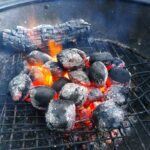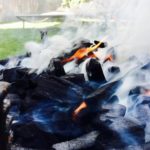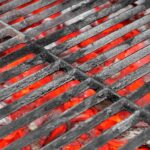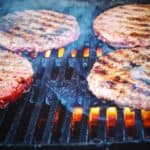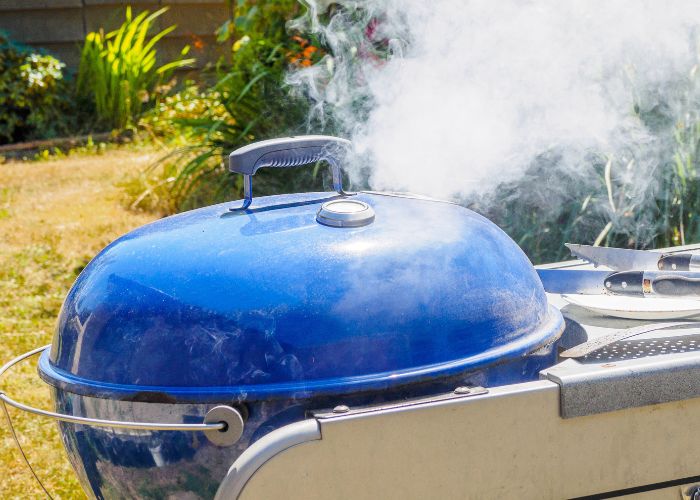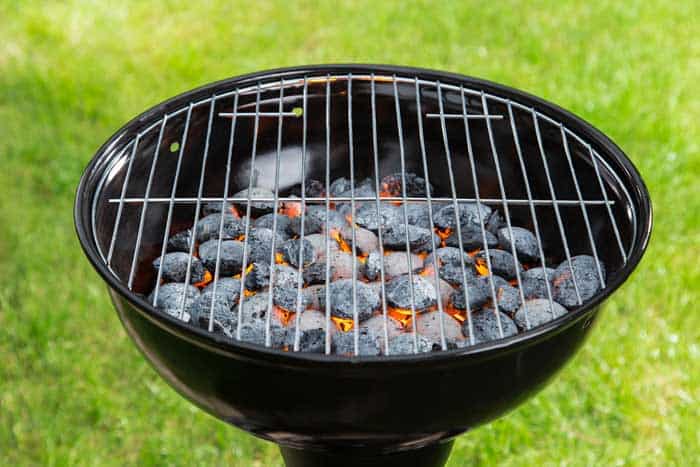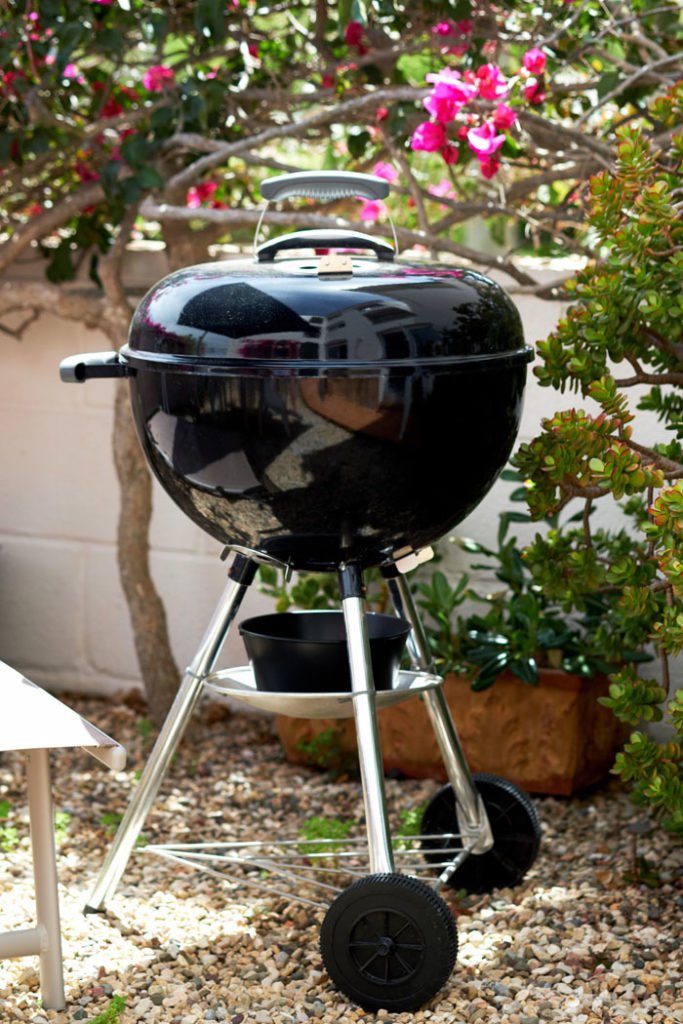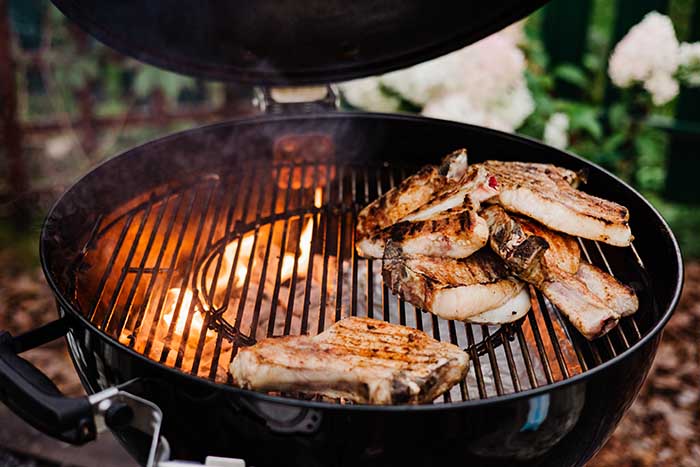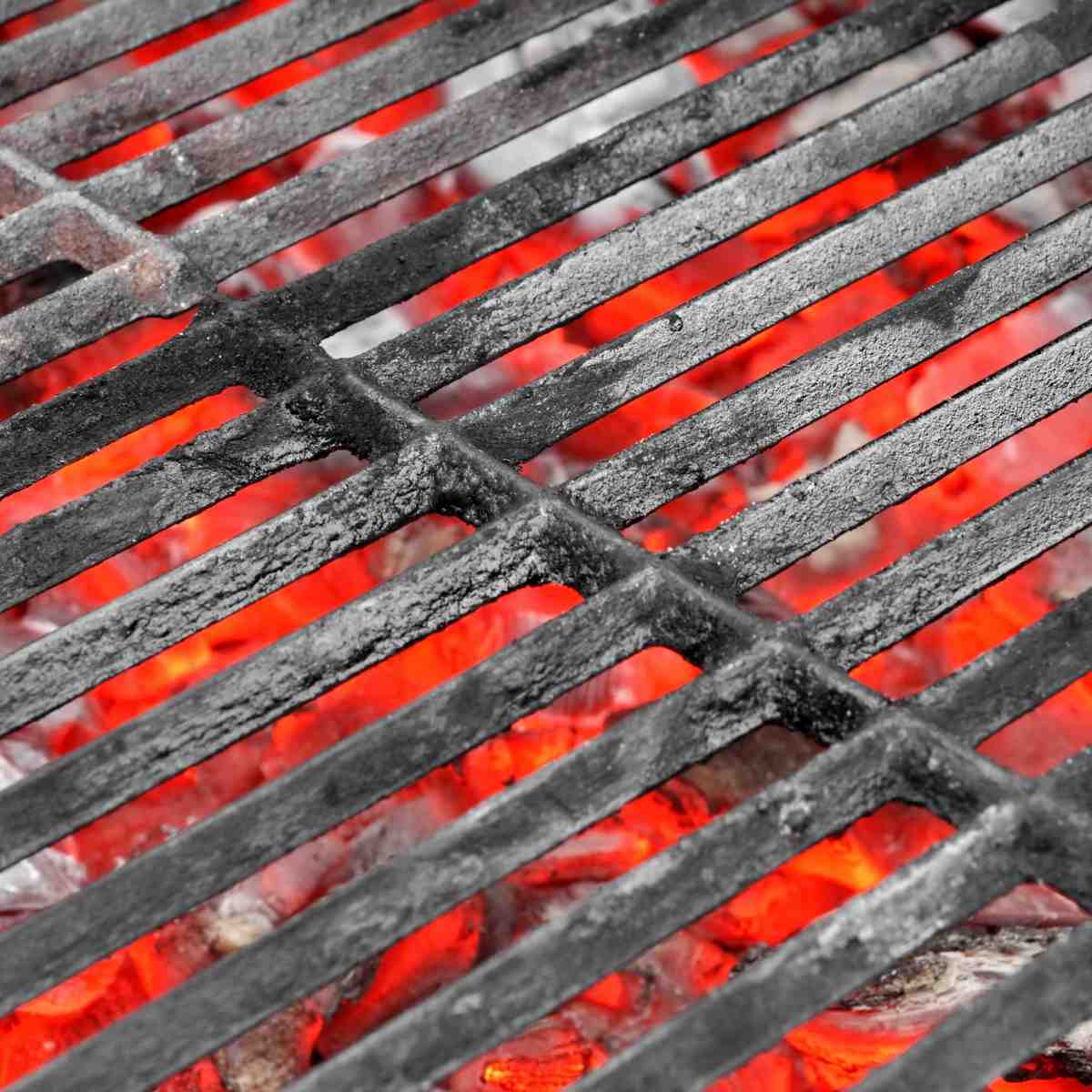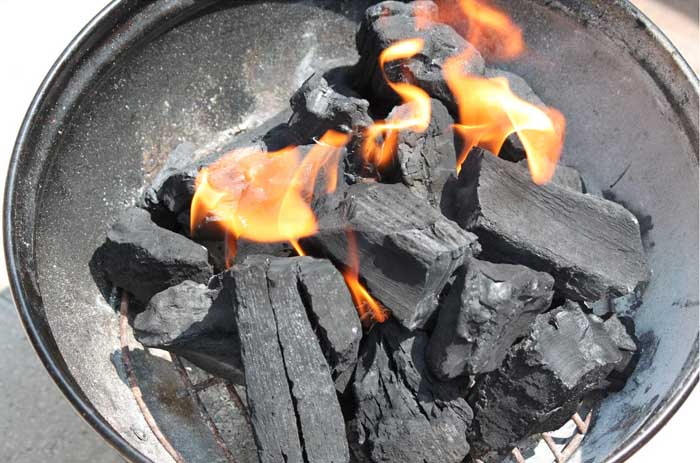
If you’re unsure whether to use lump charcoal or briquettes on your smoker or grill, you’re not alone.
The internet is rife with debate on which is best to use. And, while it’s a smoky battleground out there, there’s no need for you to get lost in the ashes.
We’ve compared the temperatures, burn rates, and costs of each to help you choose the perfect fuel for your next backyard barbecue session.
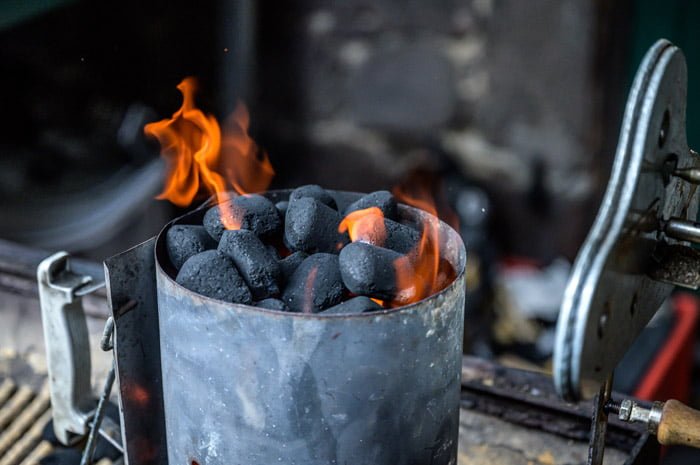
Quick Answer: Lump Charcoal vs Briquettes
The main differences between lump charcoal and briquettes are:
- Because lump charcoal is made from carbonized wood, it burns hotter and cleaner with less ash
- Briquettes produce more ash and can contain more emission-harming additives
- However, briquettes offer more consistent heat and are easier to light and manage
- Lump is better for high heat, quick cooking, while briquettes are better for longer, steady cooking
What is Lump Coal?
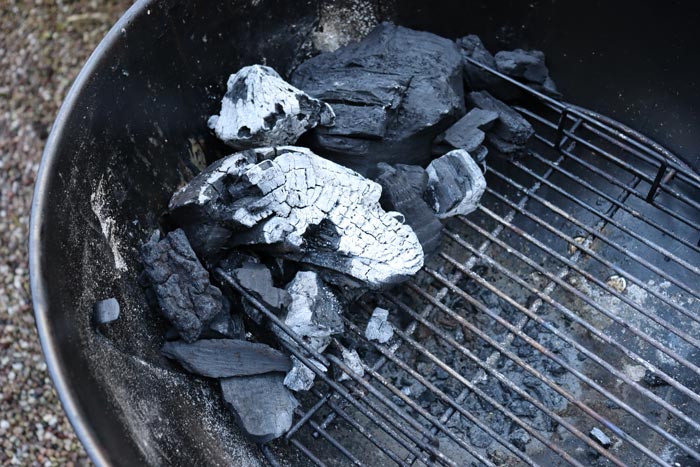
Lump charcoal is considered to be a more natural product in the sense that it is free from additives and binders. It is created by stacking hardwood logs in a kiln and then heating them to a high temperature in the absence of oxygen. This process gets rid of the moisture and volatile compounds in the wood, resulting in a hard, black carbon residue.
It is a popular choice for grilling because good lump charcoal burns hot and clean while producing very little ash. On the downside, it is generally more expensive than other types of charcoal, it can be difficult to control the heat produced, and it has a tendency to produce sparks.
What Are Briquettes?
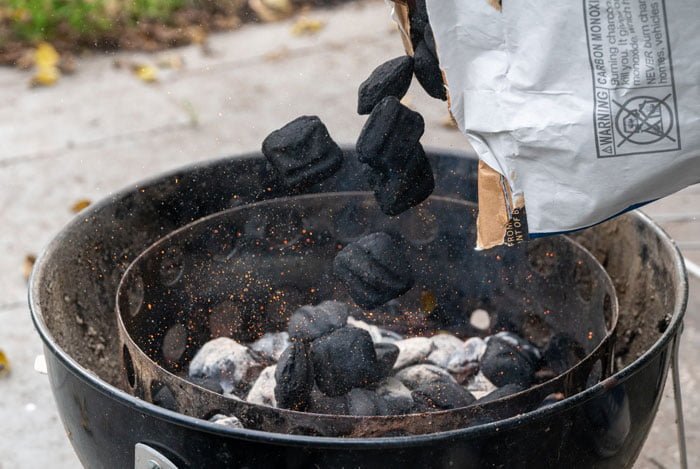
Charcoal briquettes are made by compressing sawdust and other combustible material such as wood chips, peat and coconut charcoal. This compressed mixture is then heated and bound together with a binder, before being shaped and dried. The binder used is often starch or molasses.
The advantages of charcoal briquettes are that they are easy to light and burn evenly. In addition to this, they produce consistent levels of heat (which make them ideal if you need to cook food over a longer period of time), are widely available, and are relatively inexpensive.
Potential drawbacks include the fact that they produce a lot of ash (not so easy for clean-up) and may contain additives that produce emissions that are harmful to the environment and potentially your food.
The Main Differences Between Lump Coal and Briquettes
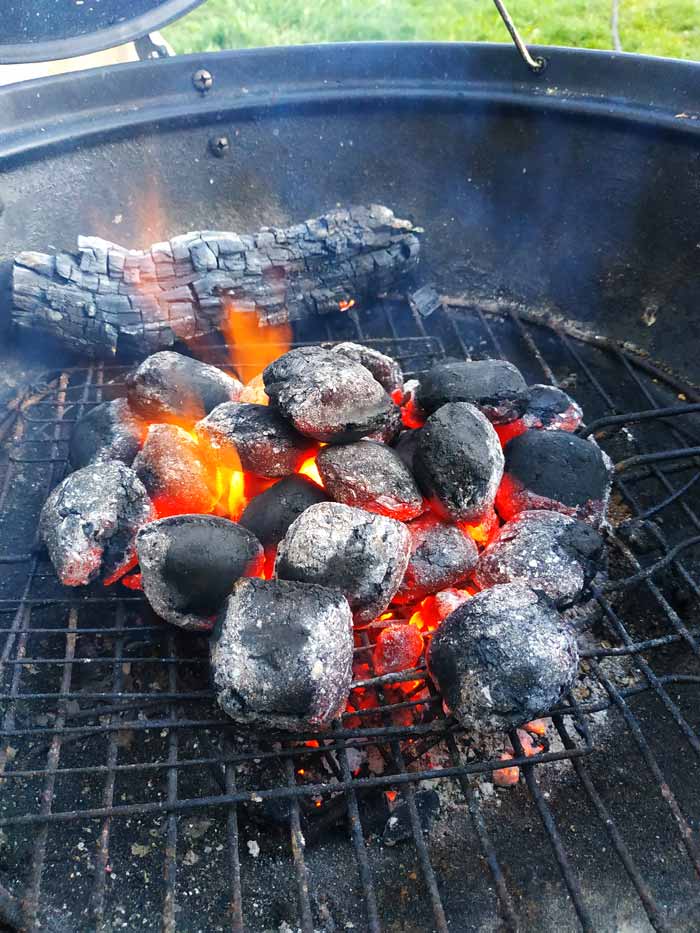
Right, now that we’ve taken a closer look at each of these products, let’s compare them head to head.
Heat Production
Because it is made purely from hardwood, lump charcoal burns hotter than briquettes. The binders and other additives that are involved in the process of creating briquettes can lower the temperature at which this type of charcoal burns.
Burn Rate
The rate at which charcoal burns is based on its density. Because charcoal briquettes are more dense than lump charcoal, they take longer to burn.
Cost
Lump charcoal is typically more expensive than charcoal briquettes. This can be attributed to the fact that it is a more natural product (the raw materials are more expensive) and the production process is more time- and labor-intensive.
Ease of Use
Generally speaking, charcoal briquettes are easier to use than lump charcoal. In addition to being more difficult to light, lump charcoal is also more difficult to control because it burns hotter and faster than charcoal briquettes.
Environmental Impact
Both lump charcoal and charcoal briquettes produce harmful emissions when burned and, as such, both have a negative impact on the environment. However, because it burns cleaner and produces less ash, lump charcoal is generally considered to have less of an environmental impact than charcoal briquettes (which can release additional chemicals due to the additives used in production). Furthermore, the ash produced by lump charcoal can be composted, whereas the ash produced by charcoal briquettes should be disposed of in a landfill.
Health Impact
Neither lump charcoal or charcoal briquettes can be regarded as having a neutral impact on health as both produce harmful emissions when burned. These emissions include carcinogenic polycyclic aromatic hydrocarbons (PAHs) and carbon monoxide. That being said, lump charcoal might have a slight edge over charcoal briquettes on this front since it contains fewer artificial binders or fillers.
Which Should You Use?
While the choice between lump charcoal and charcoal briquettes is largely a matter of personal preference, there are certain circumstances in which one will be more effective than the other.
When you want a hot, smoky fire on which you can cook food quickly, lump charcoal is the way to go. For example, you should opt for lump charcoal if you are searing a steak, grilling burgers or hot dogs, or smoking a turkey.
With briquettes you will find it easier to cook food over a long period of time because they provide long-lasting and consistent heat. Charcoal briquettes are a good option, therefore, if you are smoking a brisket, cooking a whole chicken, or preparing anything that requires low-and-slow cooking.
Of course, personal preference also comes into play. If you want a more natural product that burns cleaner, lump charcoal is the obvious choice. However, if it’s ease and convenience you’re after, briquettes might be the more appealing option.
Final Verdict
Sorry, folks, but there is no clear winner here: neither lump charcoal nor charcoal briquettes can claim the much-coveted title of Ultimate Grilling Charcoal. However, we can provide you with a few guidelines to help make your choice a little easier.
- Consider the type of food you’re cooking: if what you’re cooking needs to spend a long time on the grill, opt for briquettes. For quick cooking, lump charcoal is the way to go.
- Consider the desired temperature: lump charcoal burns hotter than briquettes, so it is the obvious choice for high-heat cooking.
- Consider your budget: charcoal briquettes are typically cheaper than lump charcoal.
- Consider your level of expertise: charcoal briquettes are easier to light and easier to work with than lump charcoal.
Whether you decide to go with lump charcoal or charcoal briquettes, we recommend that you light the coal in a chimney starter instead of trying to light it directly in the grill. Once lit, you can pour your charcoal into the grill or smoker. If you’re using lump charcoal, arrange the coal in a single layer so that it burns evenly. If using charcoal briquettes, on the other hand, you’ll want to arrange them in a pyramid shape.
